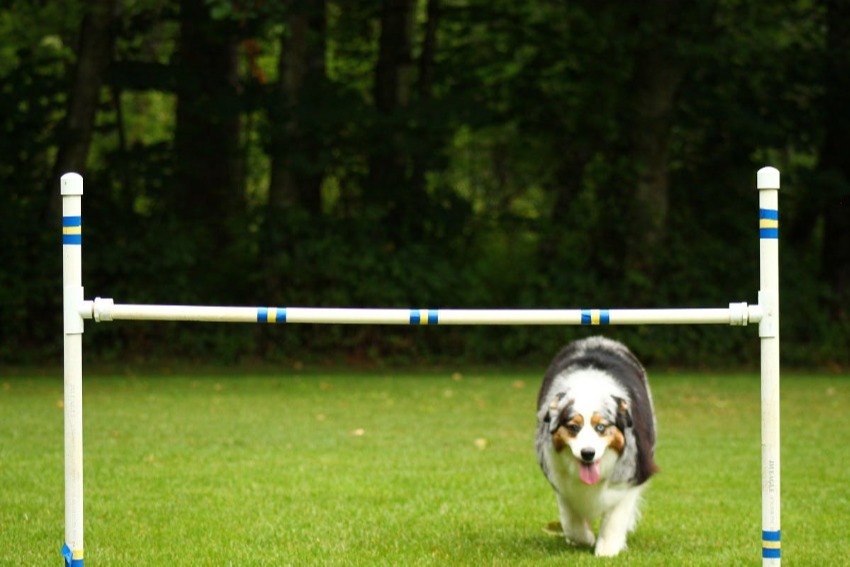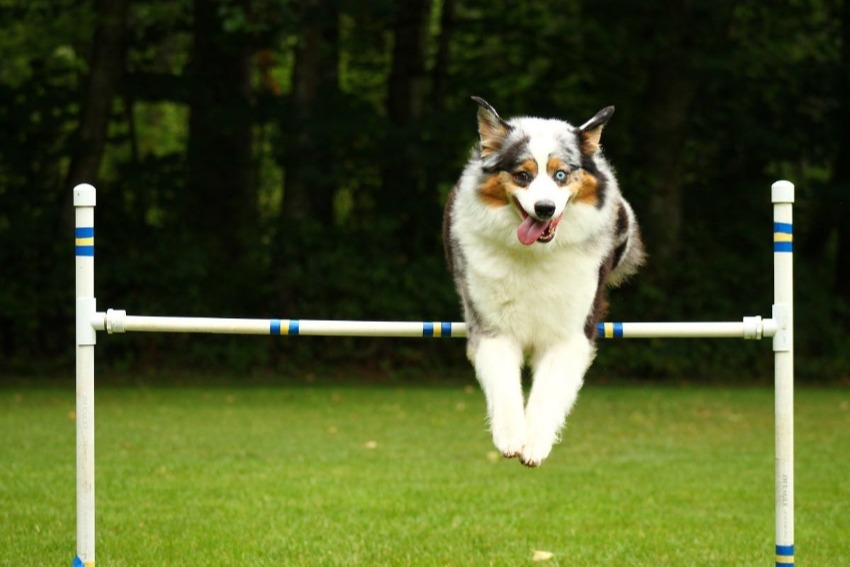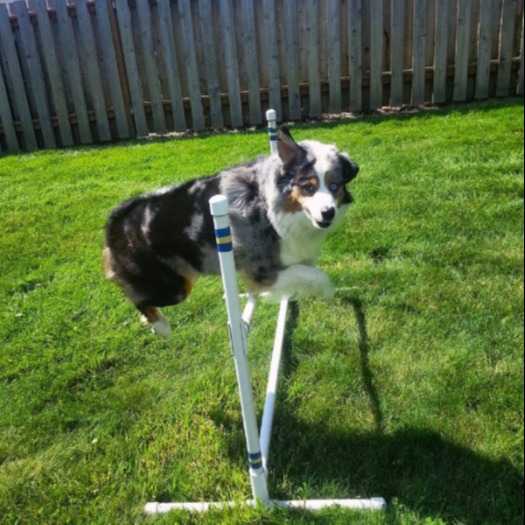How to Make Your Own DIY Dog Agility Course
By: Kelli Rascoe / Updated June 27, 2023
If you’re looking for a new activity to do with your dog, consider creating your own DIY dog agility course! Whether you’re a new pet owner or have a multi-dog household, this interactive activity is a great way to bond with your best friend. Dog agility has become a popular sport and could be new way for your dog to get some exercise. Fortunately, our team at Trupanion (the pet-obsessed minds behind Pet Parenting) love to try new activities with their dogs.
We sat down with Trupanion team member Sarah Scott to learn more about how to make your own DIY dog agility course and the impact it can make on your furry friend.

Dog agility is a beneficial sport for pups of all ages, shapes, and sizes. Scott has been active in the sport for the past ten years and first began her agility journey when her dog, Sparrow, was just one year old. According to Scott, dog agility courses can come in a wide array of shapes, sizes, and difficulty levels, and many pet owners can make them right at home (inside or outside, depending on the space).
Tips to create your own DIY dog agility course
Creating your own dog agility course at home may be easier than you think! Even small spaces can fit a simple agility course. Scott offers the following tips to get started:
- If you're handy, you can create a lot of agility equipment with PVC pipes.
- Add features like jumps, footwork ladders, and weave poles to customize your dog course.
- Dog agility courses can be unique and different, so cater to your pet’s individual needs and personality.
- Start small and don’t overwhelm yourself. Start with simple features like a jump or a weave pole.
- Plan and design your course first before gathering your supplies.
- It’s helpful to research and learn about the sport of dog agility for inspiration. You can find a wide variety of websites dedicated to agility handlers, like Clean Run. You may also want to check out dog agility training books.
The benefits of dog agility
Daily exercise is beneficial for your dog’s overall health. You may find that your dog wants a new, interesting challenge as they age.
A sport like dog agility may give you and your best friend a chance to learn and grow together. For example, “while your dog climbs, jumps and weaves through obstacles you’re right alongside with them jogging to keep up. Also, agility may help prevent obesity, boredom, and strengthen the bond between you and your dog. As your bond strengthens, you may find it’s easier to train your dog new skills,” says Scott.
A switch in your routine and a new activity might be just what your best friend needs for some motivation, and creating your own DIY dog agility course is a fun and cost-effective way to do so.
An opportunity to learn together
As with any new skill, sport, or training opportunity, it’s important to start slow and gradually work on the skill over time.
You’re both learning together and may need to give yourself time to fully understand the new sport. Naturally, “learning a new skill can be mentally exhausted for dogs, so you may find the mental and physical tasks of agility will wear your dog out easily,” states Scott.
Don’t forget to give your furry friend plenty of time to rest in between playtime and training. For more pet activities and ideas, check out this enrichment guide.
How is dog agility impactful on your dog’s health?
Dog agility is a sport, so it’s no surprise it may be helpful for your pet’s overall health.
In fact, it’s important to talk to your veterinarian to determine if agility is a good fit for your furry friend.
After all, this activity includes running and jumping at fast speeds. Scott points out the importance to talk with your veterinarian.
“You will want your dog to get a full check-up with their veterinarian before starting on any kind of exercise or agility program, Scott says. "Also, older dogs may benefit from agility as well but you may need to modify the jumps or eliminate some of the obstacles."
Scott goes on to point out that "Younger dogs should not be taught any agility obstacles until they are at least 1 year of age, as the repetitive nature of agility may damage the growth plates of a young puppy and can leave permanent damage to the bones and joints." For this reason, it’s important to always check in with your veterinarian. Agility may help strengthen bones, muscles, and increase your dog’s range of motion. It’s also beneficial for teaching your dog body awareness and great cardio exercise for both of you.
If you have any questions about agility, your veterinarian is a great resource to recommend exercise programs for your furry friend.
Do certain dog breeds excel in agility?
Every dog breed should have the opportunity to train and learn new skills. In fact, every dog is different and it may take time to learn agility and that is okay. Also, your dog’s age or breed may play a factor in the way they learn.
Fortunately, “the amazing thing about agility is that any breed can do it. There are even teacup agility courses and shows for smaller dog breeds. However, the top breeds that you may see competing are Papillion, Shetland Sheepdog, Australian Shepherds, and Border Collies. If you want to teach your dog agility, don’t let your dog’s breed discourage you. Any dog can learn skills in their own backyard or home,” points out Scott.
A DIY canine agility course can help you bond with your dog
Agility is a fun-filled sport that may help your dog learn new things as they grow and age over the years. Consider your dog’s breed, age, and energy level and look to your veterinarian for their recommendation. But with patience, love, and the drive to learn with your best friend, creating your own dog agility course at home may provide a new way to bond with your furry family member.




